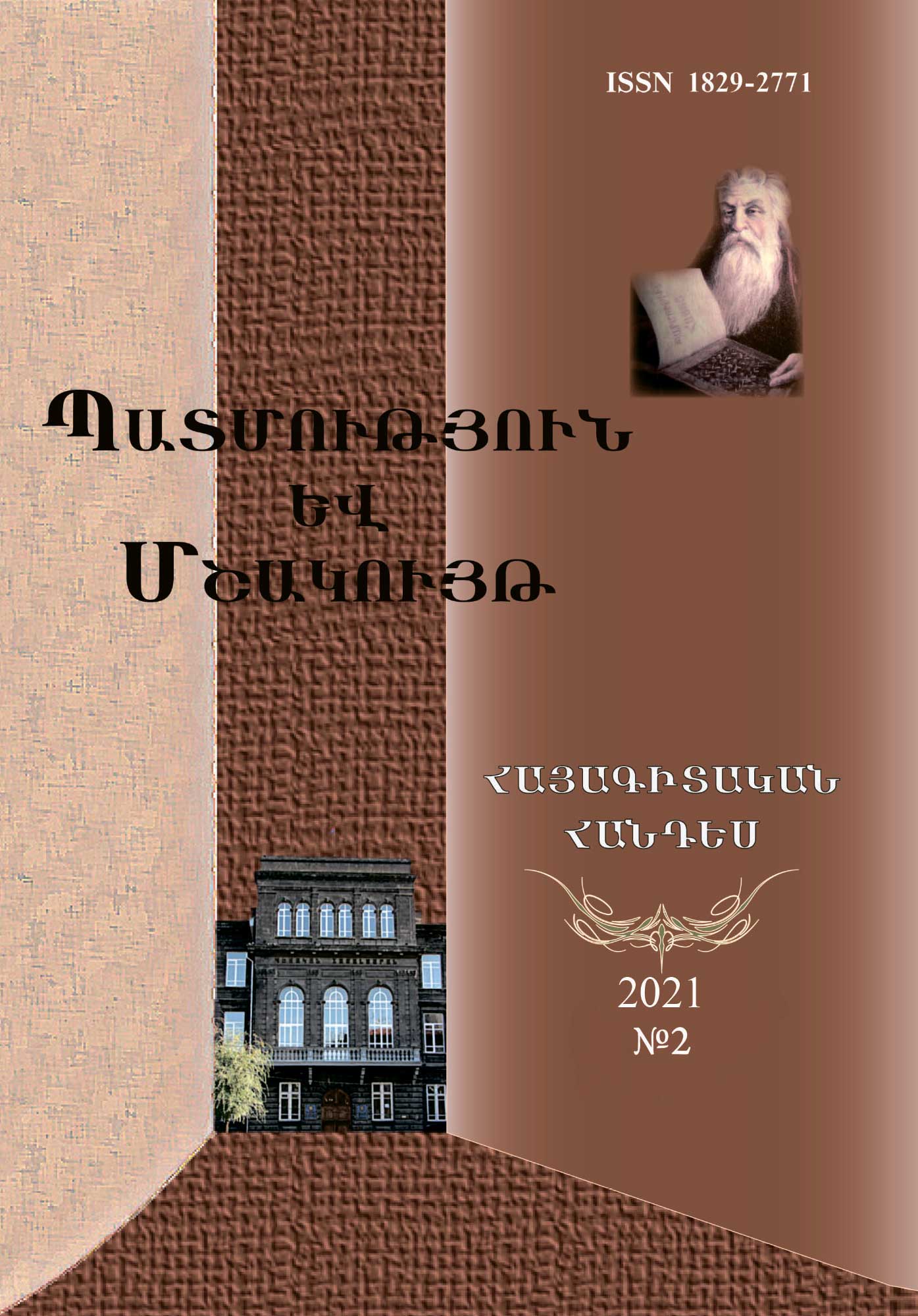Manifestations of Ethnic Identity and Historical Memory in the Armenian Festival and Ritual Culture
Keywords:
ethnic identity, historical memory, Armenian, national thinking, festival, ritual, culture, traditionAbstract
The research conducted in the context of the connection between the Armenian festival and ritual culture, ethnic identity and historical memory gave an opportunity to make certain final conclusions:
- The spread of festivals is largely due to national characteristics, one of the manifestations of which is ethnic identity and the historical memory expressed in them.
- Ethnic identity and historical memory are mainly reflected in the traditional Armenian festival and ritual complex.
- The manifestations of ethnic identity and historical memory reflected in the festivals are especially evident in the communities of Armenian Diaspora.
- The historical memory also refers to the neighboring ethnic communities that shared the fate of the forced displacement, thus reflecting the friendly traditions.
- One of the manifestations of ethnic identity is the preservation of traditional Armenian rituals in foreign and non-Christian environments.
- The preservation of the Vardavar festival in Hamshen is very remarkable. Generations of Islamized Hamshen Armenians almost do not know the history of this holiday today, but continue to celebrate it, considering it a tradition from their ancestors.
- In my view, the participation of Muslims in traditional Armenian festivals testifies to their Armenian roots.
- The historical memory help Armenians preserve the agricultural-festival traditions of former cradle in their new settlements, in spite of their unfavorable climatic conditions.
- National ceremonies dedicated to the memory of the victims of the Armenian Genocide are also connected with the historical memory. It is closely connected with the eternal memory of the Armenian martyrs, the ideology of the Armenian identity and national unity.
- Traditional Armenian festivals are most common among those for whom Armenia is considered as their homeland.
- If the first generation of migrants from Armenia still preserves national traditions, then these traditions are doomed to be forgotten among the next generations.
- The Church and the family are the main actors in the preservation of traditional festivals and rituals in the modern Armenian diaspora. Unlike in Armenia, there are almost no pan-national shrines, which are, in this context, the most important components of the presservation of historical values and the manifestation of historical memory and ethnic identity.
Downloads
Published
2021-12-31
Issue
Section
Articles
License
Copyright (c) 2021 Samvel Mkrtchyan

This work is licensed under a Creative Commons Attribution-NonCommercial-ShareAlike 4.0 International License.

